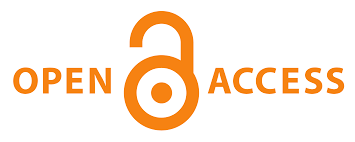Utilizing Text-to-Speech Technology: Natural Reader in Teaching Pronunciation
Main Article Content
Tira Nur Fitria
This research stimulates the use of Natural Reader Text-to-Speech (TTS) in teaching pronunciation. This research is descriptive qualitative. The analysis shows the steps of using Natural Readers. Teachers/lecturers can click https://www.naturalreaders.com/. They can log in or register into the account. If they have an account, they can continue or click “Continue with Google” or “Continue with Apple”. They can type a word, sentence, or text in the column box, or click the + icon to upload documents in Word or Pdf. They can set the type of native speaker sound (male or female), volume, and speed of pronunciation before playing/listening to the pronunciation. When all the settings have been done, they click the play icon to hear the native speaker say that have been inputted. Teachers/lecturers can ask students to follow the native speakers to say the words or sentences so the students can pronounce English words correctly and fluently. They may quickly produce or export audio into MP3 files. The Natural reader app provides a text-to-speech converter solution for both websites and mobile apps. Natural Reader converts text into sound English with various accents such as British or American even other accents. This application has a free version, but the paid version has more complete features to be used in teaching and learning English pronunciation. This tool is capable of synthesizing the human voice from the previously entered text input. Natural Readers provide substantial text-to-speech support to meet a variety of student needs in English pronunciation.
Andriani, D. (2020). The Use of Natural Reader Software in Teaching Pronunciation and Speaking Performances. Mat-Edukasia, 5(1), 21–32.
Ardini, S. N., Suwandi, & Ka, A. P. (2020). Penggunaan Smartphone Dalam Meningkatkan Kemampuan Pronunciation Bagi Siswa Sekolah Menengah Atas. Seminar Nasional Hasil Penelitian Dan Pengabdian Kepada Masyarakat, 258–267.
Ary, D., Jacobs, L. C., Irvine, C. K. S., & Walker, D. (2018). Introduction to Research in Education. Cengage Learning.
Bakken, J. P., Obiakor, F. E., & Rotatori, A. F. (2012). Behavioral Disorders: Practice Concerns and Students with EBD. Emerald Group Publishing.
Bao, D. (2018). Creativity and Innovations in ELT Materials Development: Looking Beyond the Current Design. Multilingual Matters.
Chapelle, C. A., & Sauro, S. (2019). The Handbook of Technology and Second Language Teaching and Learning. John Wiley & Sons.
Drew, P. (2012). Developing Technology-Rich Teacher Education Programs: Key Issues: Key Issues. IGI Global.
Eksi, G. Y., & Yesilçinar, S. (2016). An Investigation of the Effectiveness of Online Text-to-Speech Tools in Improving EFL Teacher Trainees’ Pronunciation. English Language Teaching, 9(2), 205–214.
Fitri, S. N., & Aeni, N. (2021). THE CONTRIBUTION OF ACTIVE LEARNING STRATEGIES IN ACTIVATING STUDENTS’ORAL COMMUNICATION. Journal of English Teaching, Linguistics, and Literature, 1(2), 122-134.
Flood, J. (2007). NaturalReader: A New Generation Text Reader. Developmental Disabilities Bulletin, 35(1–2), 44–55.
Gilakjani, A. P., & Sabouri, N. B. (2014). Role of Iranian EFL Teachers in Using ‘Pronunciation Power Software’ in the Instruction of English Pronunciation. English Language Teaching, 7(1), 139–148.
Levy, M., Blin, F., Siskin, C. B., & Takeuchi, O. (2011). WorldCALL: International Perspectives on Computer-Assisted Language Learning. Routledge.
Miles, M. B., & Huberman, A. M. (1994). Qualitative Data Analysis: An Expanded Sourcebook. SAGE Publications.
Miles, M. B., Huberman, A. M., & Saldana, J. (2013). Qualitative Data Analysis: A Methods Sourcebook. SAGE Publications.
Munggaran, A. (2012). Pengaruh Penggunaan Software Natural Terhadap Peningkatan Kemampuan Pronunciation Siswa SMP 1 Kota Bandung [Undergraduate Paper, Universitas Pendidikan Indonesia]. http://repository.upi.edu/
Pratiwi, A. E., Ufairah, N. N., & Sopiah, R. S. (2021). Utilizing TikTok Application as Media for Learning English Pronunciation. International Conference on Education of Suryakancana (IConnects Proceedings), 372–382. https://doi.org/10.35194/cp.v0i0.1374
Rahmania, A. H., & Mandasari, B. (2021). Students’ Perception Towards the Use of Joox Application to Improve Students’ Pronunciation. Journal of English Language Teaching and Learning, 2(1), 39–44. https://doi.org/10.33365/jeltl.v2i1.758
Roslaini, R., & Komara, C. (2020). The Use of Text Aloud Software in Teaching Students’ Pronunciation. Getsempena English Education Journal, 7(1), 27–41. https://doi.org/10.46244/geej.v7i1.994
Rotatori, A. F., Bakken, J. P., & Obiakor, F. E. (2014). Gifted Education: Current Perspectives and Issues. Emerald Group Publishing.
Saiful, S. (2016). The Effect of Natural Reader in the Teaching of Oral Reading Fluency. English Education: Journal of English Teaching and Research, 1(2), 15–15. https://doi.org/10.29407/jetar.v1i2.476
Samad, I. S., & Aminullah, A. (2019). Applying ELSA Speak Software in the Pronunciation Class: Students’ Perception. Edumaspul: Jurnal Pendidikan, 3(1), 56–63. https://doi.org/10.33487/edumaspul.v3i1.85
Sharp, V. F. (2008). Computer Education for Teachers: Integrating Technology into Classroom Teaching. John Wiley & Sons.
Sufi, E., & Shalmani, H. B. (2018). The Effects of Tflat Pronunciation Training in Mall on the Pronunciation Ability of Iranian EFL Learners. European Journal of Foreign Language Teaching, 3(2), Article 0. https://doi.org/10.46827/ejfl.v0i0.1662
Victor, W., C. X. (2014). Handbook of Research on Education and Technology in a Changing Society. IGI Global.
Wibowo, A., & Cholifah, T. N. (2018). Instrumen Tes Tematik Terpadu: Untuk mahasiswa pendidikan guru Sekolah Dasar. Media Nusa Creative (MNC Publishing).
Tira Nur Fitria , Institut Teknologi Bisnis AAS Indonesia
Lecturer at AAS Bisnis Institute




